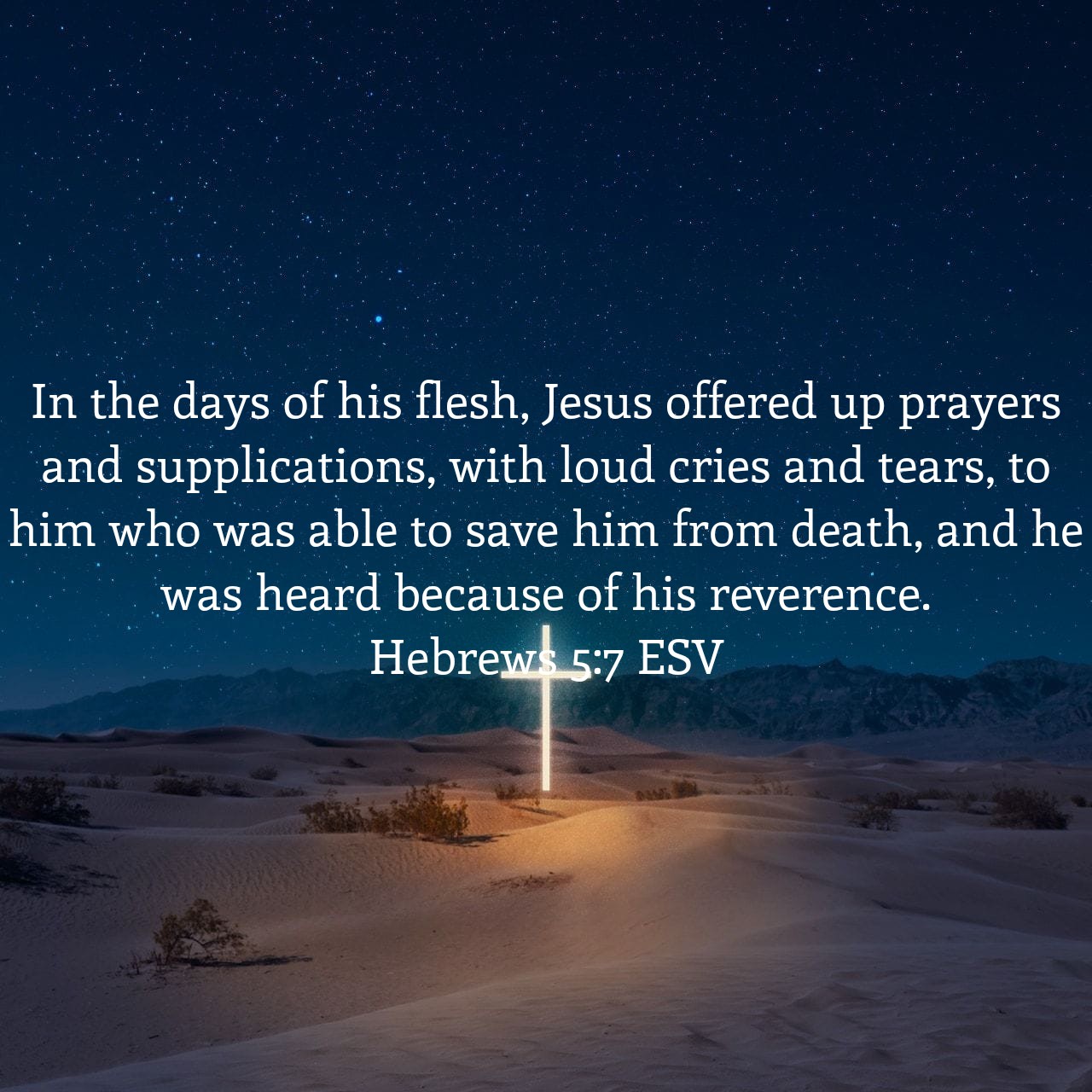Devotional 16 June 2025

While the reference to Melchizedek in verse 6 introduces an important concept, we will return to that when the writer unpacks it more thoroughly in Hebrews 6 and 7. For now, our focus is on the heartfelt picture of Jesus in verse 7: Jesus praying with “loud cries and tears,” fully experiencing human suffering and need.
This vivid image challenges the often stoic portrayals of Jesus. He was not a distant, detached figure unaffected by life’s burdens. He felt the weight of sorrow and pain just as we do. His prayers were not composed or clinical, but desperate and sincere, like ours so often are. In His agony at Gethsemane (Luke 22:44), He sweat blood, cried out, and submitted Himself wholly to the Father’s will. This is the same Jesus who wept at Lazarus’s tomb (John 11:35), and who groaned in spirit (John 11:33).
These truths remind us that when we suffer, cry, and wrestle in prayer, we are not broken or lacking in faith—we are walking the path our Savior walked. He understands. More than that, He invites us to come boldly: “Let us then with confidence draw near to the throne of grace…” (Hebrews 4:16)
Jesus was heard because of His reverence: His awe-filled obedience and submission to the Father’s will. He did not demand deliverance, but entrusted Himself to the One who saves. This is not just our example, it’s our hope! Because He was heard, we too can be sure that God hears us. Our High Priest knows what it is to plead for help, and He stands ready to help us in our time of need (Hebrews 2:18).
So do not hide your tears. Bring them before the throne. You are not alone—and you are heard.